When Russia started bombing Kharkiv a year ago, the building housing the Grynyov art collection, Borys and Tetyana Grynyov’s private collection of contemporary Ukrainian art, came under fire. Armed with only a few small boxes, hardly any packing material and a small van, Marina Konieva, the collection’s only representative in Kharkiv at the time, had one goal: to ferry the art to safety.
“Our works are masterpieces representing Ukrainian culture from the 20th and the 21st centuries, we had to evacuate them to save them for the future,” says Konieva via phone in Kharkiv.
Evacuating the art started in early March. “At that time, the city was surrounded by Russians,” Konieva explains. “We could not understand fully what would happen next, whether the city would be captured by Russians or not.”
One of the buildings that housed the collection was damaged by Russian shelling. “The windows cracked totally, water was leaking because of the explosions, and we had no heating,” she says. Local artists came one evening to help her pack up the works, and the next morning she began the hunt for a car.
“I’m so thankful to the artists who helped me evacuate the works that were most likely to have been damaged otherwise. They helped me a lot with that,” she adds.
“The other building that we kept the paintings in was very close to where Russian soldiers were stationed, approximately one to two kilometres away, and we were under shelling and unable to know when it was going to start and if it was going to happen.”
It was an extremely challenging process, one that required ingenuity and some hard decisions, especially when it came to bigger paintings. “We could not take them with us, and we couldn’t leave them, so we just cut the pieces out of the frames and wrapped them in an old rug. It was traumatic,” says Konieva, who coordinated with the Grynyov family by phone and text to decide which pieces to prioritise in the evacuation process.
Thanks to her heroic efforts, the collection was transported to Paris, where some of the works are on display in an exhibition titled The Facets of Freedom at the Cultural Centre of the Embassy of Ukraine in France (until 3 March). The show offers the relatively rare opportunity to get up close and personal with a wide range of contemporary Ukrainian artists; here we are sharing five noteworthy pieces.
To Konieva, who curated the exhibition, and Viktoriia Gulenko, the director of the cultural centre, one thing is for certain: the move is temporary, and the paintings will find their way back to Ukraine.
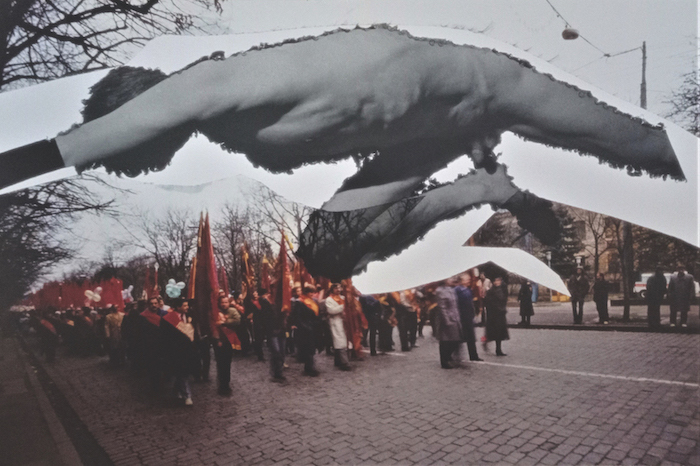 Yevheniy Pavlov, Sans titre, de la série “Photographie totale”, 1970-1990
Yevheniy Pavlov, Sans titre, de la série “Photographie totale”, 1970-1990
Yevheniy Pavlov, Sans titre, de la série “Photographie totale”, 1970-1990
Bearing in mind that conceptual photography, with its reliance on potentially dangerous symbolism and metaphors, was strictly forbidden in Soviet times, it is not hard to understand why this collage by Ukrainian photographer Yevheniy Pavlov, depicting a man flying over a procession for the First of May demonstration, was only printed in the 90s, after the collapse of the USSR, despite the photos being taken in the 70s. Pavlov is among the founders of the artistic group Vremya, which later went on to establish the renowned Kharkiv School of Photography.
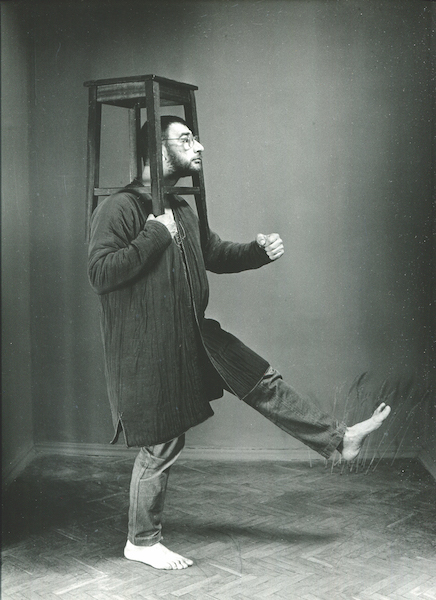 Oleh Malyovany, Chursin qui vit dans un tabouret, 1991
Oleh Malyovany, Chursin qui vit dans un tabouret, 1991
Oleh Malyovany, Chursin qui vit dans un tabouret, 1991
In the early days following the collapse of the Soviet Union, property fraud was an everyday occurrence. “People would wake up and not be owners of their apartments anymore,” explains Gulenko, who is also a cultural councillor at the Embassy of Ukraine in France in addition to her role as the director of the cultural centre. In this photograph, Oleh Malyovany, another member of the Vremya group and one of the founding fathers of the Kharkiv School of Photography, addresses this fear of dispossession. “Malyovany portrays someone who is both addicted to their property and exercises the freedom to protect what belongs to them,” Gulenko adds.
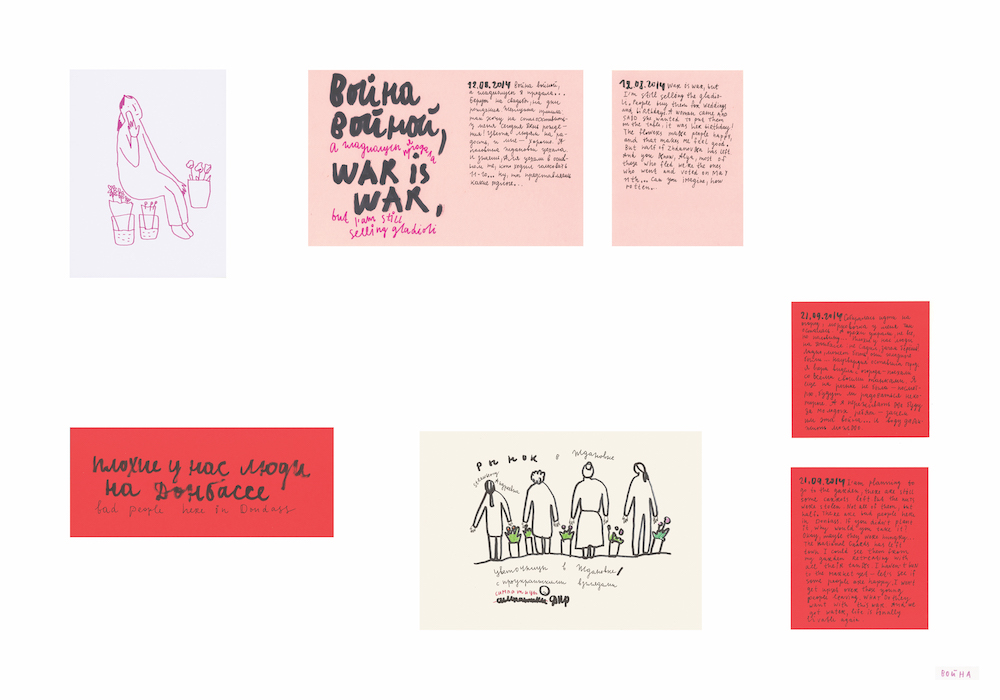 Alevtina Kakhidze, Vivre la guerre avec Klubnika Andriyivna, 2014-2016
Alevtina Kakhidze, Vivre la guerre avec Klubnika Andriyivna, 2014-2016
Alevtina Kakhidze, Vivre la guerre avec Klubnika Andriyivna, 2014-2016
The art of Alevtina Kakhidze – an artist, graphic designer, performer and videographer from Zhdanivka in the Donbas region of Ukraine – is not new to the cultural centre, which hosted her solo show in 2022. Kakhidze’s works in The Facets of Freedom exhibition, which take the form of a diary featuring both text and visuals, are part of a larger installation and performance grappling with a child’s quest for freedom as they age. “It’s not an accident that I did not hang her pieces in the main room but rather hung them along the stairs,” says Konieva, stressing that every single guest that comes to the exhibition goes up the stairs looking for the art, the way kids grow up looking for liberty.
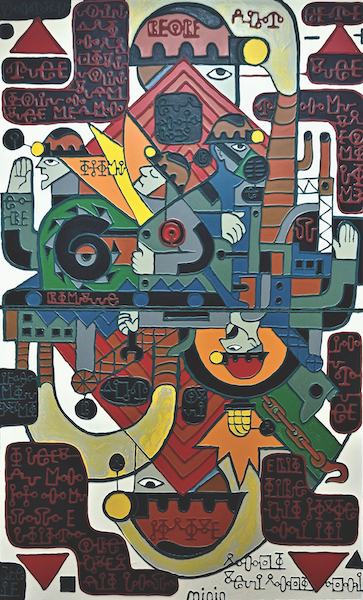 Roman Minin, Donetsk.Carte, 2013
Roman Minin, Donetsk.Carte, 2013
Roman Minin, Donetsk.Carte, 2013
In this work, the photographer, sculptor and street artist Roman Minin sets out to add a splash of colour to his home region of Donbas – normally characterised by the mining industry and the darkness that accompanies it. Prior to Russia’s annexation of Crimea in 2014, Minin created works engaging with the concept of escape from Donbas, which proved to be prophetic of everything to come.
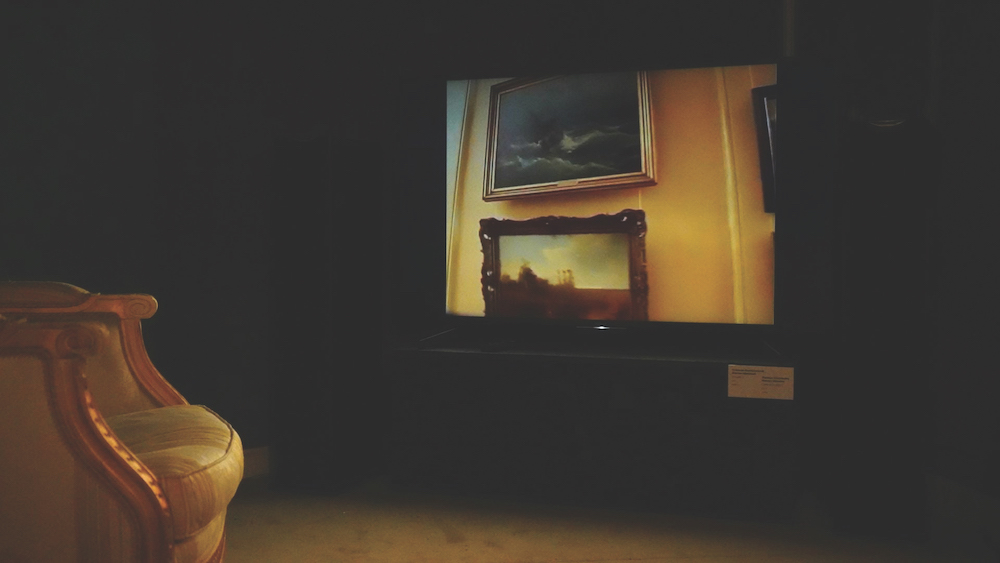 Maksym Afanasiev and Stanislav Volyazlovsky, Dans le musée 2, 2011
Maksym Afanasiev and Stanislav Volyazlovsky, Dans le musée 2, 2011
Maksym Afanasiev and Stanislav Volyazlovsky, Dans le musée 2, 2011
When Maksym Afanasiev and Stanislav Volyazlovsky first organised an exhibition featuring live monkeys at the Kherson Fine Arts Museum in the early 2000s, the video of which is part of the Paris exhibition, it was perceived as funny and unusual. “Today, we observe this video from an absolutely different angle because this museum was burglarised by the Russian Army. The pictures and art pieces that can be seen in the video are now just absent because they were stolen,” Konieva explains. “Now we watch it with a sense of deep pain.” Many of Volyazlovsky’s artworks remain in Kherson, and there is no information about their fate.
UPCOMING EXHIBITION
Ukraine: A Year of Resilience, a Culture of Resilience
On 20 February, the Grand Palais Immersif in Paris will open its doors to the public to show Ukraine: A Year of Resilience, a Culture of Resistance, a series of immersive exhibitions which debuted at the Toronto Ukrainian Festival last year. A collaboration between the Cultural Centre of the Embassy of Ukraine in France and the Embassy of Canada to France, the multimedia presentation comprises two exhibitions. The first pays homage to two legends of the Ukrainian art world: Taras Shevchenko, a 19th-century poet and artist, and Maria Prymachenko, a 20th-century folk artist. The second show, Ukraine, Land of the Brave, plunges visitors into the photojournalistic coverage of the war in Ukraine from this past year.
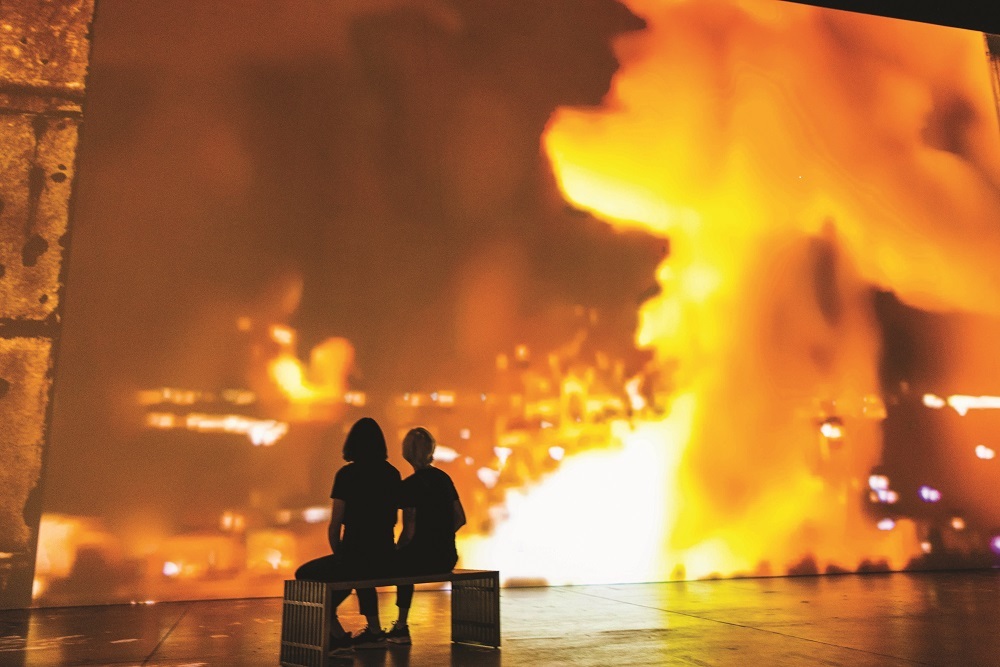 Ukraine, Land of the Brave debuted at the Toronto Ukrainian Festival in 2022
Ukraine, Land of the Brave debuted at the Toronto Ukrainian Festival in 2022
“The goal of immersive exhibitions is to place people inside the event; in this case it can be powerful because it can make people feel like they were in the war. It is one thing is to see something on TV and not understand it and another thing to imagine you are the one living it,” says Viktoriia Gulenko, noting the Canadian debut was a source of both laughter and tears.
Sign up to The Parliament's weekly newsletter
Every Friday our editorial team goes behind the headlines to offer insight and analysis on the key stories driving the EU agenda. Subscribe for free here.